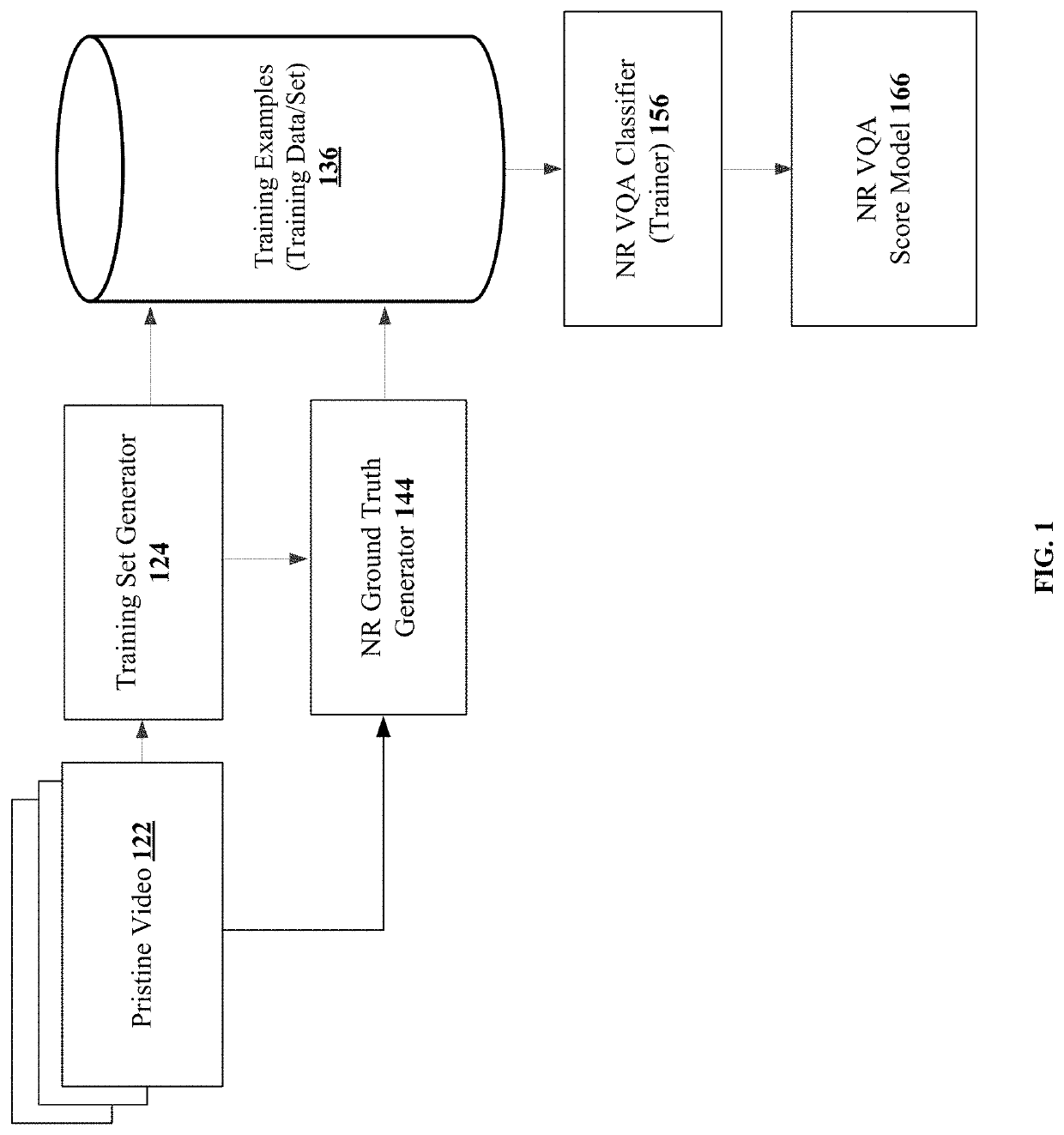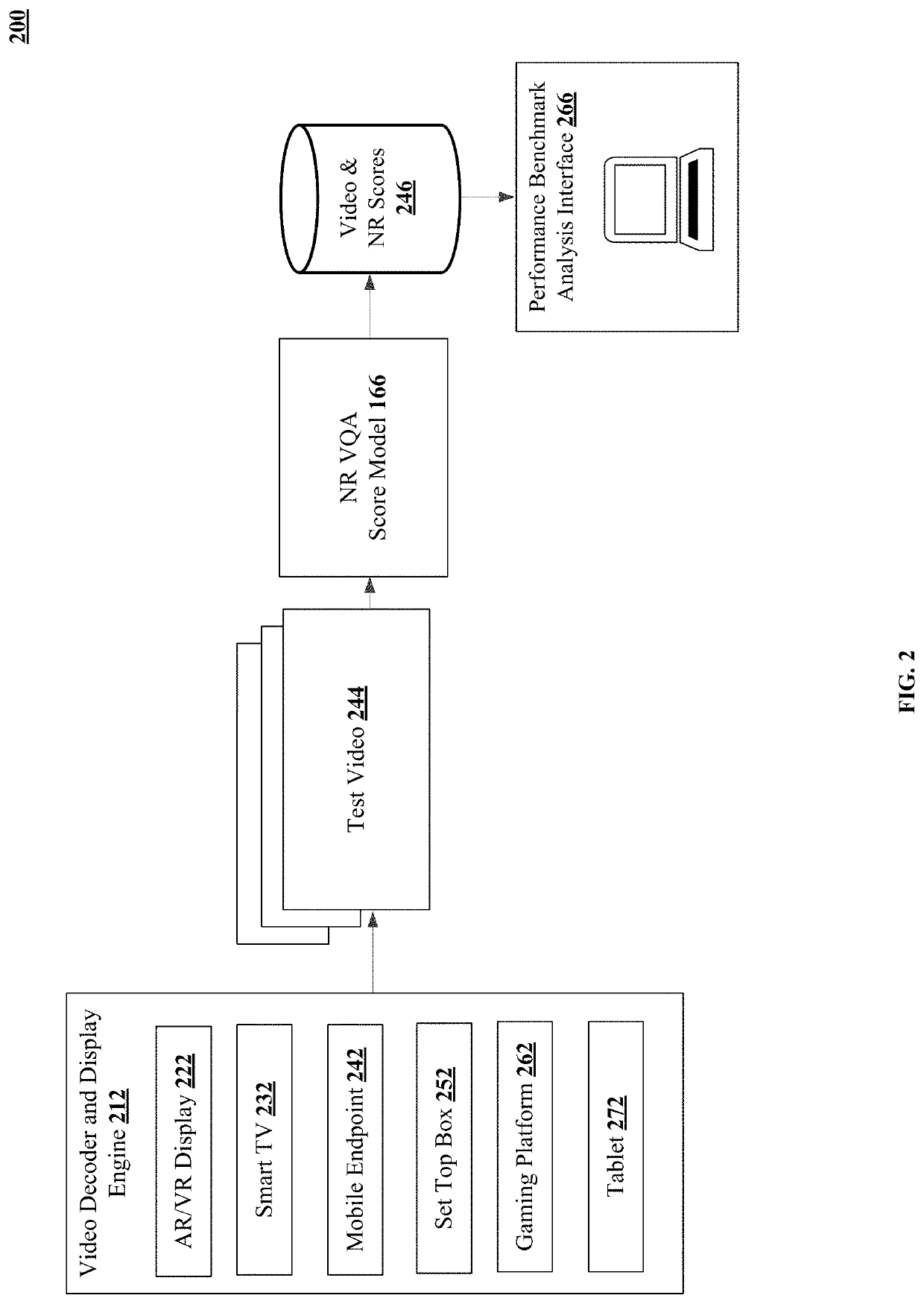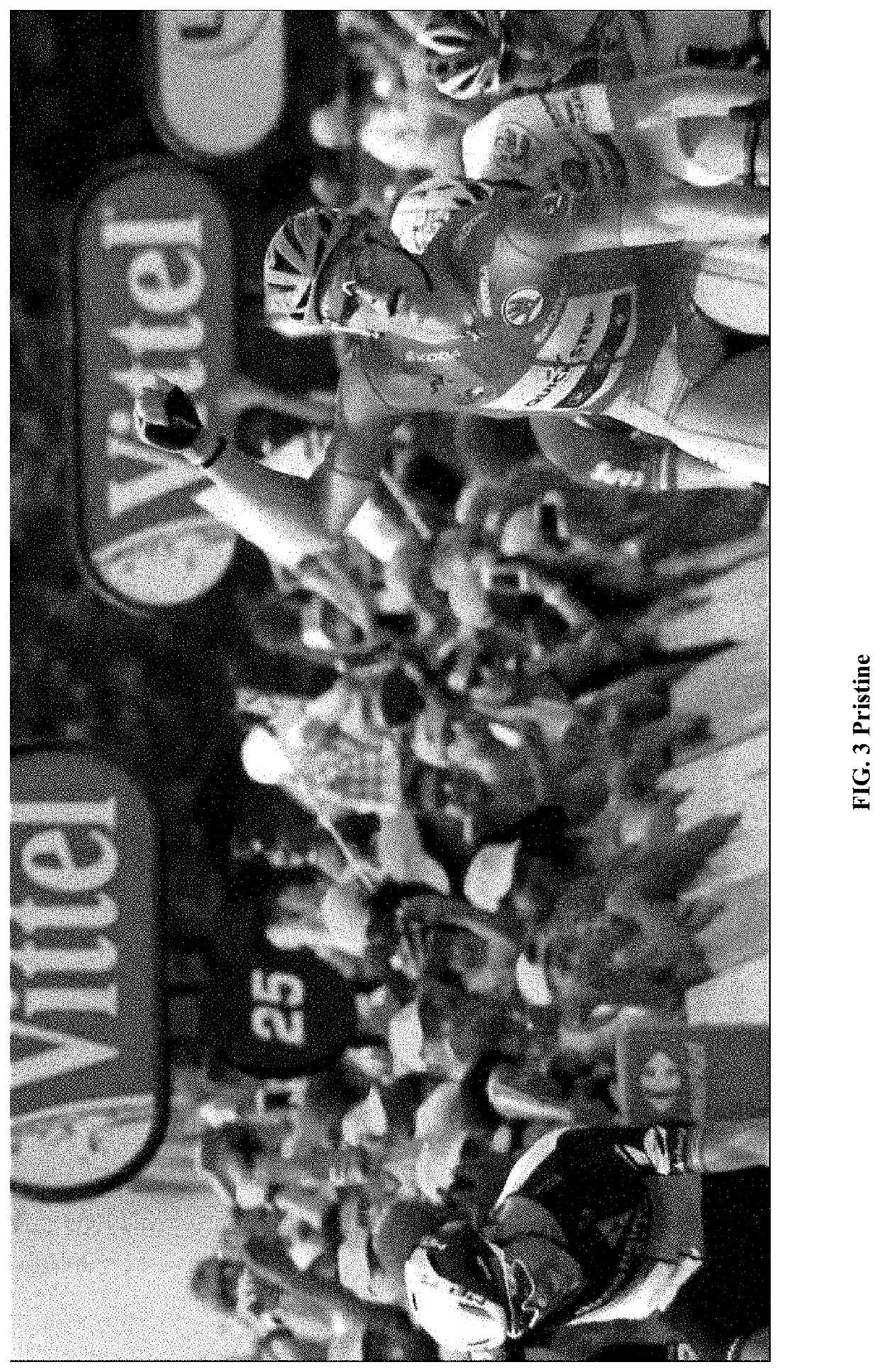Training an encrypted video stream network scoring system with non-reference video scores
a video stream network and scoring system technology, applied in the field of impaired network video quality monitoring, can solve the problems of complex in-field work, inability to apply the vqa approach to evaluate live network video streaming, and trained classifiers scoring rendered videos, so as to accurately monitor video services and evaluate the impact of throttling
- Summary
- Abstract
- Description
- Claims
- Application Information
AI Technical Summary
Benefits of technology
Problems solved by technology
Method used
Image
Examples
Embodiment Construction
[0026]The following detailed description is made with reference to the figures. Sample implementations are described to illustrate the technology disclosed, not to limit its scope, which is defined by the claims. Those of ordinary skill in the art will recognize a variety of equivalent variations on the description that follows.
INTRODUCTION
[0027]Network operators who deliver video over mobile and broadband networks need an objective way to evaluate delivered video quality even though they do not own the video content and therefore cannot directly measure the video quality, but only gather network statistics. Media-service providers such as Netflix, Amazon Prime, HBO Go and Hulu also need to be able to evaluate the quality of the video delivery, even though they do not own the network infrastructure. Full-reference video quality analysis (FR VQA) techniques, which compare received video to full quality reference video frames, effectively require content ownership, because they requir...
PUM
 Login to View More
Login to View More Abstract
Description
Claims
Application Information
 Login to View More
Login to View More - R&D
- Intellectual Property
- Life Sciences
- Materials
- Tech Scout
- Unparalleled Data Quality
- Higher Quality Content
- 60% Fewer Hallucinations
Browse by: Latest US Patents, China's latest patents, Technical Efficacy Thesaurus, Application Domain, Technology Topic, Popular Technical Reports.
© 2025 PatSnap. All rights reserved.Legal|Privacy policy|Modern Slavery Act Transparency Statement|Sitemap|About US| Contact US: help@patsnap.com



